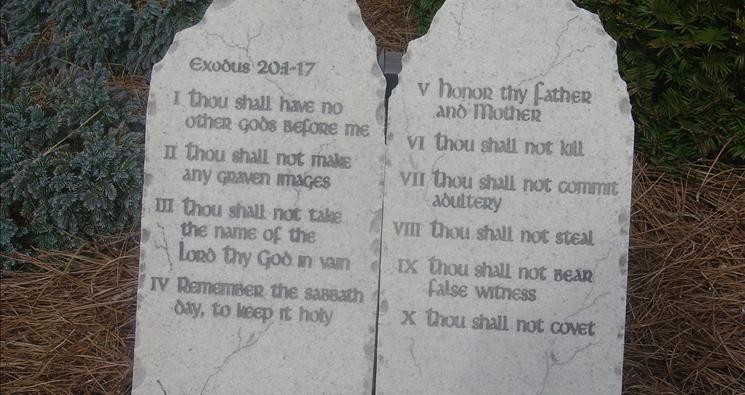Ten Commandments Under Attack: Defending our Legal Heritage in Court
This week was a significant one in the ongoing legal saga of Summum v. Pleasant Grove. As discussed in more detail here, Summum first filed suit against Pleasant Grove in 2005. While its legal theories and tactics have changed over time, Summum’s assertion has always remained the same: because the city publicly displays the Ten Commandments, the city must also display the religious tenets of Summum, titled the “Seven Aphorisms.”
Over the course of these eight years, we have filed dozens of motions and legal memoranda with the U.S. District Court in Utah, the Tenth Circuit Court of Appeals, the U.S. Supreme Court, and the Fourth District Court for the State of Utah. Along the way, we have taken and defended multiple depositions, accumulated piles of exhibits and paper discovery, and even had to defend Pleasant Grove City against a separate legal attack by the Society of Separationists claiming that the city’s display of the Ten Commandments violated the Establishment Clause and had to be uprooted and removed.
On Wednesday of this week, we filed our brief with the Utah Supreme Court, arguing that the city’s decision in 2003 to turn down a request by Summum to erect permanently its Seven Aphorisms monument in a public park did not and does not violate Article 1, Section 4 of the Utah State Constitution.
As the brief makes clear, the establishment clause of the Utah Constitution does not require Pleasant Grove City to accept and display each and every monument that is offered for donation, such as Summum’s, simply because the city has accepted and displays other donated monuments, such as the Ten Commandments monument donated by the Fraternal Order of Eagles. Though Summum may have a constitutional right to speak and distribute its literature in a public park, this right does not extend to erecting a permanent monument in a park.
If Summum’s theory were to hold true, then neither Pleasant Grove nor any Utah government actor, including the State of Utah itself, would have any effective control over the display of public monuments, statues, artifacts, and so forth. A “come one, come all” policy would destroy, in the words of the U.S. Supreme Court, the right of public officials to “select the monuments that portray what they view as appropriate for the place in question, taking into account such content-based factors as esthetics, history, and local culture.” (As the D.C. Circuit Court noted in a case decided the same year Summum first filed suit against the city, “If the authorities place a statue of Ulysses S. Grant in the park, the First Amendment does not require them also to install a statue of Robert E. Lee.”)
There is little doubt that if Pleasant Grove City removed the Ten Commandments monument, Summum and its request to display its Seven Aphorisms would go away. Indeed, Summum’s legal theory is predicated almost entirely on the city’s decision to continue to display the Decalogue. For this reason, this case is as much about the city’s display of the Ten Commandments as it is about Summum’s personal monument. However, in light of the U.S. Supreme Court’s decision in Van Orden v. Perry, also decided the same year Summum filed suit, the city has every right to display the Ten Commandments where and how it does. It is a historical fact that the Ten Commandments played a significant role in the foundation of Utah and the formation of Utah law, and the monument is displayed alongside numerous other items that relate to the history of Pleasant Grove and its people.
The filing of this week’s brief with the Utah Supreme Court is a significant step in this case’s eight year journey through both the federal and state court systems. While future work remains, including oral argument and a possible return to the state district court, we trust that the ultimate decision by Utah’s highest court will favor both the city and its display of the Ten Commandments.
